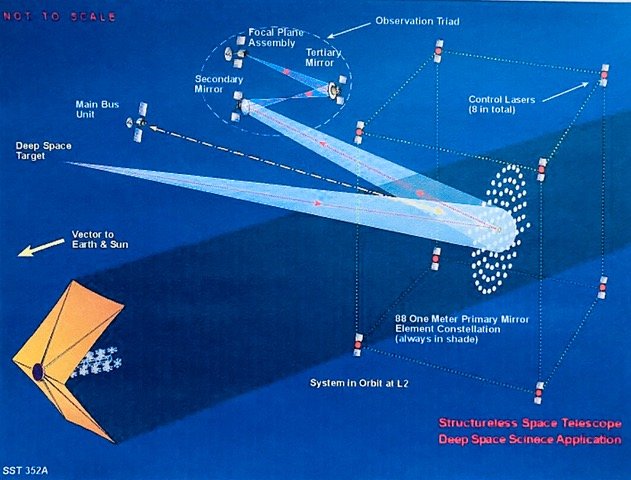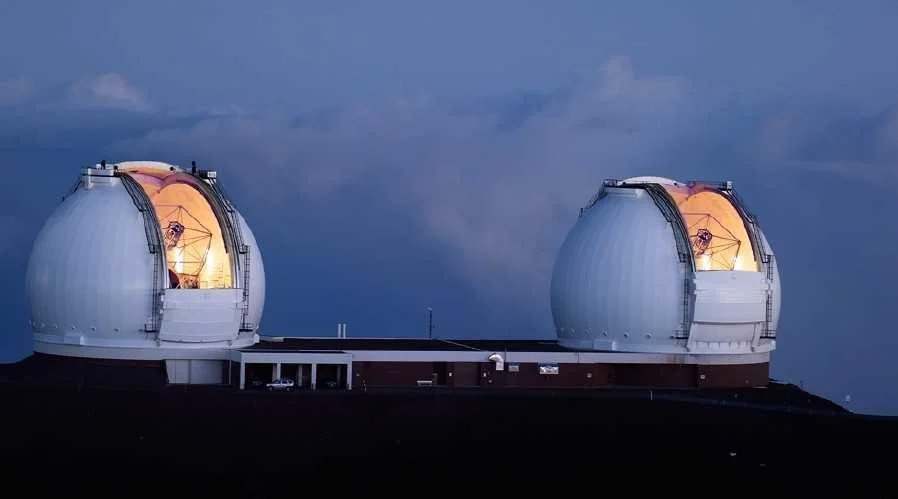Structureless Space Telescope
This illustration was the first page of one of our last presentations to NASA. By this point, we were proposing to locate our telescope at L2, one of the "Lagrange Points” where gravity of the Sun and of the Earth sort of balance out and you can “loiter” there without having to zip around the Earth as you would Geosynchronous orbit. Look it up. Your telescope can simply float there and observe other planets and galactic targets. The Webb Space Telescope will (fingers crossed) be stationed there, about a million miles from the Earth, out away from the sun.
In that meeting, we were trying to explain how our telescope could be re-pointed to other objects in the universe without repositioning all those carefully arranged little mirrors. This was a major criticism of our system because scientists are use to being able to quickly rotate the dome of their observatory and re-aim their telescopes. We were in big trouble!
My 357th drawing (see lower left conner) reveals several additional in-orbit spacecraft that allowed us to view different distant objects by maneuvering what we called the “Observation Triad” (with a Secondary Mirror, a Tertiary Mirror and the Focal Plane Assembly containing all the observation instruments). Leaving the mirror constellation in place, the triad of small spacecraft could be moved very quickly to a different place out in front of the Primary Mirror. From that new perspective, we would be looking at an entirely different point in the heavens. Hazzah!
However, that scheme only worked over a limited range. The triad could not be so far off the nominal center of the Primary Mirror that distortion was introduced. An obvious, extreme case would be a request to look at something behind the main mirror assembly. But even a reasonably modest requirement to slew the field-of-regard by 10 degrees would cause noticeable degradation in performance. The full moon covers half a degree of the sky, so with a 10 degree limit, we could only study a small patch in space without repositioning the whole telescope. That would take considerable time during which no scientist could use the telescope. Show-stopper!
In desperation, we proposed the idea of leaving the primary mirrors all in place, but tipping each of them toward the newly selected target to enlarge our possible range of observation by a little more. However, limited by the extremely small control authority that laser pulses can provide, it would take a really long time to tip them by any meaningful angle. Laser pulses are great to offset a little orbital drift, but too weak for big, fast angle changes.
Ultimately, this problem was a key reason our funding dried up. The good old familiar Hubble was commanded to fire all its attitude control jets and swing around immediately to study the Shoemaker-Levy comet as it spectacularly collided with Jupiter. It did so and … Wow, what images! The Webb (fingers crossed) will be able to do that sort of thing, too. There you have a good reason to have a backbone in your space telescope.








